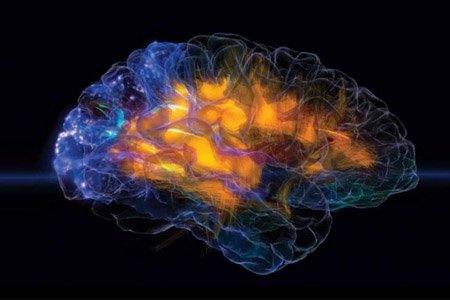- Autori:
-
Ferraro, Laura; Di Forti, Marta; La Barbera, Daniele; La Cascia, Caterina; Morgan, Craig; Tripoli, Giada; Jongsma, Hannah; Seminerio, Fabio; Sartorio, Crocettarachele; Sideli, Lucia; Tarricone, Ilaria; Carloni, Anna Lisa; Szoke, Andrei; Pignon, Baptiste; Bernardo, Miguel; de Haan, Lieuwe; Arango, Celso; Velthorst, Eva; Gayer-Anderson, Charlotte; Kirkbride, James; Rutten, Bart P F; Lasalvia, Antonio; Tosato, Sarah; Del Ben, Cristina Marta; Menezes, Paulo Rossi; Bobes, Julio; Arrojo, Manuel; Tortelli, Andrea; Jones, Peter; Selten, Jean-Paul; van Os, Jim; Murray, Robin; Quattrone, Diego; Vassos, Evangelos
- Titolo:
-
Cognitive presentation at psychosis onset through premorbid deterioration and exposure to environmental risk factors
- Anno:
-
2025
- Tipologia prodotto:
-
Articolo in Rivista
- Tipologia ANVUR:
- Articolo su rivista
- Lingua:
-
Inglese
- Formato:
-
Elettronico
- Referee:
-
Sì
- Nome rivista:
- Psychological Medicine
- ISSN Rivista:
- 0033-2917
- N° Volume:
-
55
- Intervallo pagine:
-
1-11
- Parole chiave:
-
IQ; cannabis; childhood abuse; cluster analysis; migration; risk factors
- Breve descrizione dei contenuti:
- Background: Previous studies identified clusters of first-episode psychosis (FEP) patients based on cognition and premorbid adjustment. This study examined a range of socio-environmental risk factors associated with clusters of FEP, aiming a) to compare clusters of FEP and community controls using the Maudsley Environmental Risk Score for psychosis (ERS), a weighted sum of the following risks: paternal age, childhood adversities, cannabis use, and ethnic minority membership; b) to explore the putative differences in specific environmental risk factors in distinguishing within patient clusters and from controls. Methods: A univariable general linear model (GLS) compared the ERS between 1,263 community controls and clusters derived from 802 FEP patients, namely, low (n = 223) and high-cognitive-functioning (n = 205), intermediate (n = 224) and deteriorating (n = 150), from the EU-GEI study. A multivariable GLS compared clusters and controls by different exposures included in the ERS. Results: The ERS was higher in all clusters compared to controls, mostly in the deteriorating (β=2.8, 95% CI 2.3 3.4, η2 = 0.049) and the low-cognitive-functioning cluster (β=2.4, 95% CI 1.9 2.8, η2 = 0.049) and distinguished them from the cluster with high-cognitive-functioning. The deteriorating cluster had higher cannabis exposure (meandifference = 0.48, 95% CI 0.49 0.91) than the intermediate having identical IQ, and more people from an ethnic minority (meandifference = 0.77, 95% CI 0.24 1.29) compared to the high-cognitive-functioning cluster. Conclusions: High exposure to environmental risk factors might result in cognitive impairment and lower-than-expected functioning in individuals at the onset of psychosis. Some patients' trajectories involved risk factors that could be modified by tailored interventions.
- Pagina Web:
-
https://doi.org/10.1017/S0033291724003507
- Id prodotto:
-
144239
- Handle IRIS:
-
11562/1153928
- ultima modifica:
-
8 febbraio 2025
- Citazione bibliografica:
-
Ferraro, Laura; Di Forti, Marta; La Barbera, Daniele; La Cascia, Caterina; Morgan, Craig; Tripoli, Giada; Jongsma, Hannah; Seminerio, Fabio; Sartorio, Crocettarachele; Sideli, Lucia; Tarricone, Ilaria; Carloni, Anna Lisa; Szoke, Andrei; Pignon, Baptiste; Bernardo, Miguel; de Haan, Lieuwe; Arango, Celso; Velthorst, Eva; Gayer-Anderson, Charlotte; Kirkbride, James; Rutten, Bart P F; Lasalvia, Antonio; Tosato, Sarah; Del Ben, Cristina Marta; Menezes, Paulo Rossi; Bobes, Julio; Arrojo, Manuel; Tortelli, Andrea; Jones, Peter; Selten, Jean-Paul; van Os, Jim; Murray, Robin; Quattrone, Diego; Vassos, Evangelos,
Cognitive presentation at psychosis onset through premorbid deterioration and exposure to environmental risk factors
«Psychological Medicine»
, vol.
55
,
2025
,
pp. 1-11
Consulta la scheda completa presente nel
repository istituzionale della Ricerca di Ateneo 








